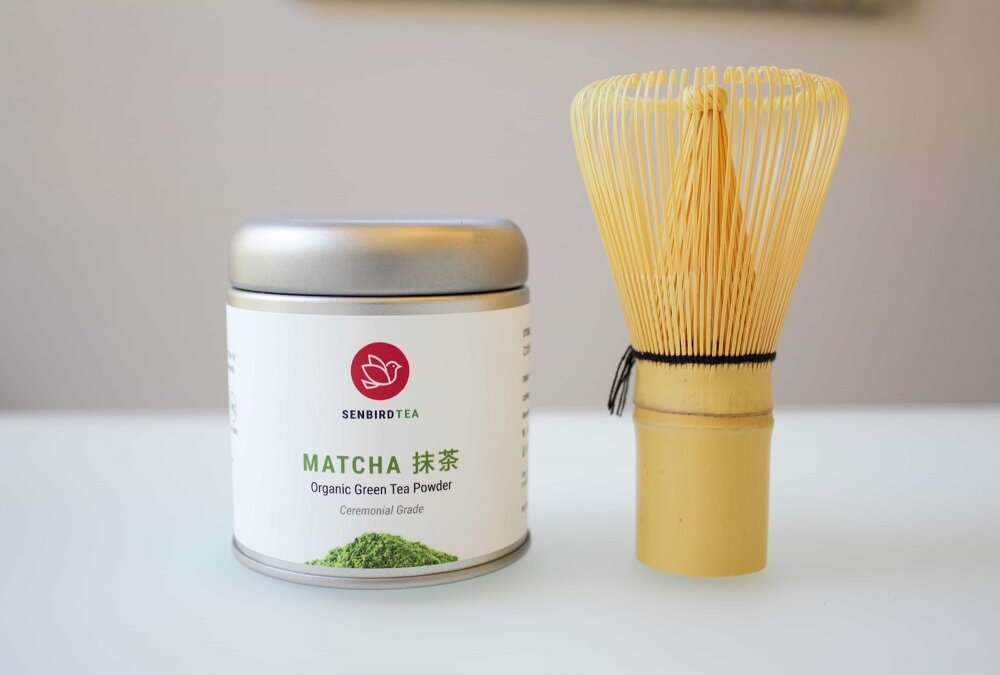[Review] Senbird Tea - Small batch Japanese green tea
This post contains affiliate links, which means Steeped Dreams earns a small commission if you purchase with these links or discount codes (at no cost to you). Please know all opinions in reviews on Steeped Dreams are genuine and not influenced by affiliate partnerships.
Save 15% with Senbird Tea by using code steepedreams.
If you’re a Japanese tea fan and conscious consumer, here’s a brand you need to check out.
I am absolutely ecstatic to finally be reviewing Senbird Tea, because they are everything I love and value in a tea company (more on that below). Senbird Tea first came onto my radar when I wrote about them for a blog about farm-direct Japanese green tea brands.
I’ve been an avid fan girl since and got the chance to try their products after Senbird Tea sent me a lovely sampling.
For this Senbird Tea review, I tried a ceremonial matcha, two green tea varieties, and two herbal teas. I also fulfilled my dream of using a bamboo matcha whisk.
- Ceremonial matcha ($24.99)
- Sencha classic green tea ($23.99)
- Gyokuro shade grown green tea ($29.99)
- Sobacha buckwheat tea ($24.99)
- Mugicha barley tea ($9.99)
- Bamboo matcha whisk ($23.99)
About Senbird Tea
Senbird Tea steeping guide
I appreciate Senbird Tea’s brand for three main reasons.
Senbird Tea is based in the US, but sources all its tea directly from small tea farms in Japan. This transparency is something I’ve applauded since first learning about the company. In fact, you can read up about each farmer responsible for your cup of tea and where in Japan it came from on the tea tin and online.
The number of active small Japanese tea farms has been shrinking for several decades due to an aging workforce and low quality commercial farms, so by buying from local tea farmers, you are supporting their traditional craft and quality products.
Second, their tea is certified organic by Japanese Agricultural Standards (JAS) from the Ministry of Agriculture, Forestry and Fisheries (MAFF).
And third (this one really speaks to my heart), Senbird Tea walks the talk when it comes to sustainable practices without “green washing” their branding.
I didn’t even know they actively follow sustainable practices until I got the package in the mail. My order didn’t have a piece of plastic packaging in sight. You can order a tin refill for a discount when you run out of tea to keep reusing the same original tins at home. If tea bags are your thing, you can also rest easy knowing Senbird Tea only only use plastic-free, biodegradable corn fiber tea bags.
Now that we all feel warm and fuzzy about the brand behind the tea, let’s see how the products measure up.
Ceremonial matcha review
The ceremonial grade matcha comes from the Sato third generation family farm in Kyoto, Japan. The Uji region specifically is known for its high quality matcha, so you know this stuff is for real.
Senbird Tea also sent me a bamboo whisk and embarrassingly (as a tea blogger), it was my first time owning one. After following the included directions for usucha matcha, I made a bowl of matcha correctly for possibly the first time ever. Turns out, the sifting and bamboo whisk truly make a difference.
The matcha has a gorgeously vivid emerald color and a pleasantly bitter yet smooth taste. I’ve drank the matcha straight in its frothy goodness and in a latte and the quality truly shows. Just a teaspoon is incredibly flavorful.
Sencha & gyokuro review
Sencha is a staple of Japanese green tea, so it’s perhaps no surprise that I had to try it from Senbird Tea. Because the flavor is so rich, I plan on using it for cold brew tea as a refreshing treat throughout the day. This sencha comes from Shizuoka, Japan, where the farmer Masa Yamamoto still produces handmade fertilizer to maintain tea’s quality.
Perhaps a lesser known green tea, gyokuro is grown in the shade for 20 days, similar to matcha. Because of its unique production process, gyokuro is considered a higher end tea with the price tag to match. This was my first time tasting gyokuro, so I wasn’t sure what to expect, but it had a uniquely umami and airy flavor. This variety comes from the same tea farm in Kyoto as the matcha I tasted.
Mugicha barley tea & sobacha buckwheat tea review
I’m a big fan of herbals in cold brew tea, so the first thing I did after recovering from the amazingly strong earthy aroma upon opening the mugicha was throw a bag into a bottle. Luckily, this tea is typically enjoyed chill in the summer months so I’m on to something. I’ve had generic Japanese barley tea before, but wow did this hit different.
Senbird Tea’s mugicha is flavorful and toasty, and a wonderfully refreshing, caffeine-free beverage to enjoy before bed on a hot summer night.
Being an avid soba noodle fan, I was taken aback when I steeped the mini popcorn kernel looking sobacha to find the water turn a golden yellow. Sobacha is touted for its many health benefits, including good digestion and blood circulation, so looks like I had a new nighttime tea favorite in the works. Senbird Tea’s website states that you can eat the kernels after steeping as-is in salad or in other creative ways.
Both these herbal teas are from Hokkaido, Japan’s northern most prefecture known for its quality agriculture!
Tea samples were provided by Senbird Tea for review.










![[Review] Firebelly Tea - Sleekly designed functional blends](https://images.squarespace-cdn.com/content/v1/6008e4b84dfdb80938cd0442/cdd4b217-3704-40dd-b11e-bc18ff413610/firebelly+tea+review.JPG)
![[Review] Harney & Sons - Paris tea and two similar blends](https://images.squarespace-cdn.com/content/v1/6008e4b84dfdb80938cd0442/5cf20e59-ce49-4fba-b9dc-16f1f43a1349/harney+tea+with+plant.JPG)


